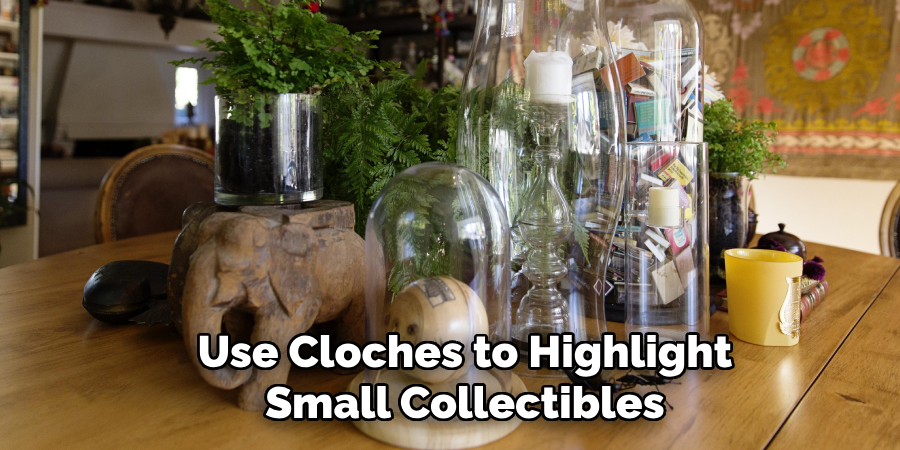To make a cloche for plants, gather a plastic bottle and cut off the bottom, then place it over the plant. Additionally, you can use a glass jar or a plastic container instead of a bottle for the same purpose.
Creating a diy cloche provides protection and insulation for your plants, promoting their growth and vitality. By making a cloche, you can shield your plants from extreme weather conditions, pests, and other potential harms. With just a few materials and a little effort, you can extend your growing season and enhance the health of your plants.

Credit: www.youtube.com
Why Use A Cloche For Your Plants?
Using a cloche for your plants has multiple benefits, including protection from frost and cold weather. It creates a sheltered environment that shields delicate plants from extreme conditions. The cloche acts as a barrier, preventing frost damage and keeping the plants warm.
Not only does it provide protection, but it also enhances plant growth. The cloche traps heat and moisture, creating a mini greenhouse effect, which encourages healthy growth and accelerates the germination process. By using a cloche, you can extend the growing season, giving your plants a head start and ensuring their survival in harsh weather conditions.
So, if you want to safeguard your plants and boost their overall health, consider making a cloche for them. It’s a simple but effective solution that any gardener can implement.
Materials Required To Make A Cloche
To make a cloche for plants, you will need a clear plastic or glass dome. Another option is a wire hoop or pvc pipes. Additionally, have scissors or a utility knife on hand. These materials are crucial for creating a protective covering for your plants.
With the clear plastic or glass dome, you can shield your plants from harsh weather conditions while still allowing sunlight to penetrate. The wire hoop or pvc pipes will provide structure and support for the cloche, ensuring it stays in place.
Lastly, the scissors or utility knife will be necessary for cutting and shaping the materials as needed. Gather these essential items, and you’ll be ready to construct your own functional and practical cloche for your plants.
Step-By-Step Guide To Building A Cloche
Creating a cloche for your plants is a simple process that can yield significant benefits. Begin by preparing the base, ensuring it is sturdy and level. Next, construct the hoop frame, using materials such as pvc pipes or flexible metal wire.
Attach the clear dome securely to the frame, ensuring it provides adequate protection from the elements. Remember to position the cloche in an area that receives sufficient sunlight for your plants. By following these steps, you can create a functional and effective cloche that will help protect your plants and promote their growth.
Say goodbye to worrying about unpredictable weather conditions and hello to a thriving garden.
Choosing The Right Location For Your Cloche
When choosing the right location for your cloche, consider the sunlight exposure it will receive. Ensure adequate air circulation around the plants. Additionally, protect the cloche from strong winds that could damage or topple it. Proper placement is essential for the success of your plants.
Avoid shady areas or areas with too much direct sunlight, as this can affect their growth. Similarly, a lack of air circulation can lead to an increase in humidity and the growth of mold or mildew. Strong winds can cause the cloche to become unstable, potentially damaging not only the structure but also the plants inside.
Take these factors into consideration to ensure optimal conditions for your plants under the cloche.
Tips For Maintaining Your Cloche
To maintain your cloche effectively, regular cleaning and sterilization are essential. Clean the cloche with a mild soap solution and rinse thoroughly. Sterilize the cloche by soaking it in a mixture of bleach and water. Monitor the temperature and humidity levels inside the cloche regularly.

Use a thermometer and a hygrometer to ensure optimal conditions for your plants. Adjust the ventilation according to the needs of your plants. Open the vents to regulate temperature and humidity, and close them during colder nights. By following these tips, you can ensure that your plants thrive inside the cloche.
Keeping a clean and sterilized environment will promote healthy growth and protect your plants from pests and diseases. So, don’t forget to prioritize regular maintenance for your cloche.
Creative Ways To Decorate Your Cloche
Making a cloche for plants is a fun and creative way to decorate your garden. One idea is to add fairy lights or twinkling leds inside the cloche to give it a magical touch. Another option is to incorporate natural elements such as moss or small rocks to create a more natural and organic look.
You can also customize your cloche with paint or stickers to match your personal style and preferences. Experiment with different colors and patterns to make it unique and eye-catching. Whether you choose to add lights, natural elements, or customize with paint, making a cloche for plants is a simple and enjoyable diy project that will add charm and beauty to your garden.
Alternative Uses For Cloches
Cloches can be used for more than just protecting plants. They can also serve as stylish displays for decorative objects, such as delicate figurines or treasured trinkets. Another creative use for cloches is to create miniature terrariums, allowing you to showcase tiny plants and create a whimsical indoor garden.
Additionally, you can use cloches to highlight small collectibles, like vintage coins or intricate jewelry pieces. These versatile glass domes make it easy to create charming focal points in your home or office. Whether you’re looking to add a touch of elegance to your space or display your prized possessions, cloches offer a unique and visually appealing solution.

Discover the endless possibilities with cloches and let your creativity shine.
Frequently Asked Questions About Cloches
Cloches are a great way to protect and nurture your plants. Many people wonder if they can use a cloche for outdoor plants. Yes, you can definitely use a cloche for outdoor plants. It provides protection from harsh weather conditions and pests.
The next question that might come to mind is how long should you keep the cloche on your plants? Ideally, you should keep the cloche on your plants until they are fully established and can withstand the elements on their own.
Lastly, if you are looking to make a cloche on a budget, you may wonder if you can use recycled materials. The answer is yes! You can make a cloche using recycled materials such as plastic bottles or jars. It’s a sustainable option that helps reduce waste while keeping your plants happy and healthy.
Frequently Asked Questions Of How To Make A Cloche For Plants
How Do You Make A Cloche For Plants?
To create a cloche for plants, start by cutting the bottom of a plastic bottle. Place the bottle over the plant and bury the bottom part in the soil to secure it. The cloche will protect the plant from harsh weather conditions and help it grow healthier.
What Materials Can I Use To Make A Cloche?
You can make a cloche using various materials such as plastic bottles, glass jars, or even plastic containers. These materials are easily accessible, cost-effective, and provide sufficient protection to plants. Choose a material that suits your needs and the size of your plants.
How Does A Cloche Benefit Plants?
A cloche acts as a protective barrier that shields plants from extreme temperatures, frost, and pests. It creates a microclimate around the plant, promoting growth and preventing damage. Additionally, it helps to retain moisture, which is crucial for plant survival, especially during hot and dry weather.
Conclusion
Crafting your own cloche for plants can be a rewarding and environmentally friendly way to protect and nurture your green friends. By repurposing everyday materials and following a few simple steps, you can create a custom cloche that fits your specific gardening needs.
Whether you’re looking to shield delicate seedlings from harsh weather conditions or extend the growing season for your favorite plants, a homemade cloche offers a practical solution. Remember to choose materials that are easily accessible and considerate of the environment, such as plastic bottles or old windows.
With a little creativity and resourcefulness, you can provide the ideal microclimate for your plants to thrive. So, why not give it a try? Your plants will thank you for the extra love and care, and you’ll have the satisfaction of knowing you made it yourself.
Happy gardening!

